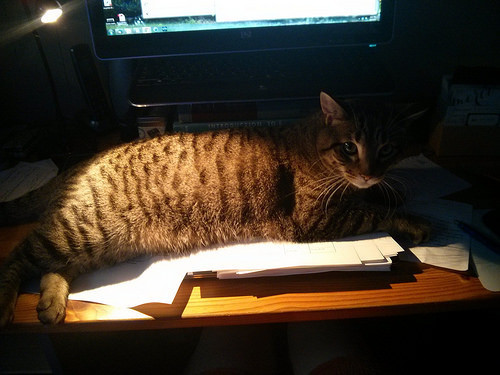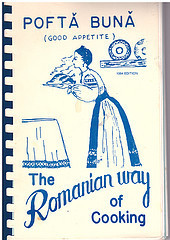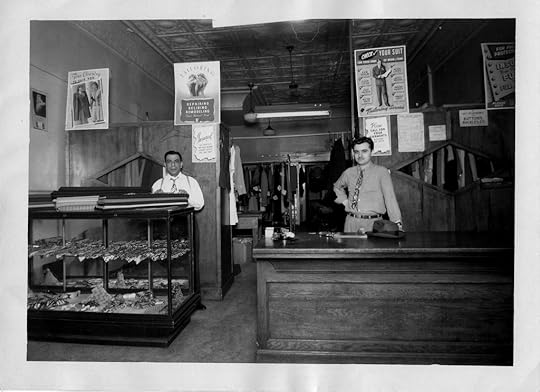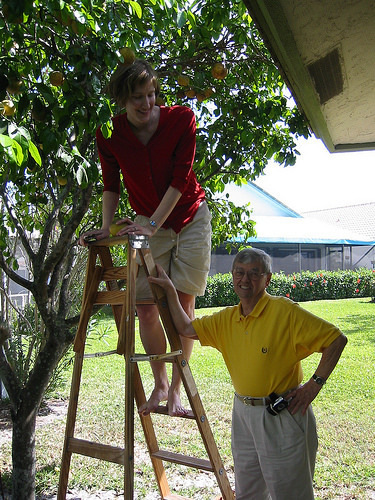Dunrie Greiling's Blog, page 7
September 8, 2014
An introvert’s social reserve – a muscle or a well?
In March I changed my work setting. I left my job of almost seven years and moved to independent marketing consulting and writing. Although I have my share of meetings at client sites and in coffee shops, I typically work and write in my home office.
What I feared
I’m an introvert. I’m restored by quiet and work productively alone. That means I should like this situation, and I do. Yet, I was worried I might get isolated or isolate myself. The work I do requires me to reach out to others, for expertise, for feedback, for work, so I haven’t gone underground, it’s not possible.
 One peril of the home office: attention and heat-seeking cats.
One peril of the home office: attention and heat-seeking cats.I was worried I’d “go native” with the cats, get even more quiet and watchful. While that’s kind of a joke, I did think that being social was like a muscle. If I didn’t exercise it or keep in practice, I would drop back to previous levels of social awkwardness. In the last few months, I have had my usual share of awkward moments, but I don’t know if it is more or less than before. Probably about the same.
When I left my position, I thought I’d miss my team–I do miss them individually and as a group. I have to make a team or gather input from people less officially connected to my fate and my projects. It is a little more conscious and less spontaneous now, but others are still available. While I’m mostly on my own during the day, I’m hardly solo. Friends, collaborators, and mentors are as close as a phone call, an email, or a drive across town to a lunch date.
What surprised me
I thought I loved our open, collaborative workspace. Yet, I find working in a quiet office has increased my feeling of well-being. When I worked in a leadership position in our open office, I felt I was on-stage and yearned for privacy and quiet in my off-hours. I found myself procrastinating returning personal phone calls on weekends and weeknights. I sometimes felt overwhelmed by the need to be social, engaging, upbeat.
I am finding more social energy now that my need for quiet and privacy are better met. So my social reserve is more like a well, it needs time to replenish, and it is less like a muscle that needs to be kept in shape.
Next Steps
Clients and colleagues have offered me drop-in space at their offices, and Ann Arbor offers a great coworking space, the Workantile. So I have options if I need to work near others. Hasn’t happened yet, but it is nice to have a choice.
The post An introvert’s social reserve – a muscle or a well? appeared first on Scientific Ink.

July 5, 2014
Great wrapping (packaging) extends the gift
I can be a minimalist. There’s almost nothing I like better than organizing things for disposal. I like to give away books (to friends, to the library); I like to give away clothing I haven’t worn for a while. I love to reuse cardboard boxes that come in the mail – to organize items for travel, to use for a gift box – and then to recycle them. I resent “wasting” money on gift packaging, preferring to reuse what I’ve received. I love using leftover yarn as ribbon and I have used newspaper once or twice to wrap a gift even recently. Yet there is some packaging that I cannot bring myself to reuse or recycle.
It’s well-designed and carries sweet memories, and I can’t bear to part with it, even though I detest clutter.
I cannot part with….
Tiffany Boxes
Over the years, I’ve received a few Tiffany gifts. Great-Aunt Jane and Great-Uncle Chuck gave us crystal candleholders for our wedding, and I’ve thought of them and recalled our wedding day each time we use them. More recently, Delta Airlines has been giving Tiffany Gift Cards as an option for their Diamond Medallion members as a year-end perk. Smart choice: For the frequent business traveler, give the wife something sparkly to distract her from your absence.
Here’s a YouTube video from Tiffany, it’s Christmas-themed, and the only one in their channel that focuses on the box rather than the contents (of course they feature some jaw-dropping jewelry in the commercial as well).
Tiffany packages everything as a gift — the gift card has its flat box and white ribbon and then the item it purchases gets its own box and ribbon. Each step in the chain brings more white-ribbon-wrapped Robin’s egg blue boxes, a series of gift experiences. The boxes are lovely and I enjoy the whole experience, even though the boxes (especially the ones for the gift cards) become immediately useless. Reusing them seems out of the question. It would be such a let down – to receive something that’s not Tiffany in a Tiffany box! Yet, I have a difficult time tossing them. So they pile up, and I try to use them for special items, like the puff of our sweet cat Floyd‘s fur I found behind the couch, years after he passed away.
Stella & Dot Boxes
When you go to a Stella and Dot party (my neighbor had one, a colleague of mine at work had another), you can order jewelry and it will be delivered to your home. Like Tiffany, each item is packaged as a gift, and the items I’ve purchased have been for me, so a couple of gift boxes hang around after I start wearing the jewelry. The boxes are colorful and printed with nice patterns, and they have a couple of steps to open them (a paper case that slips off before you can open the box). Others enjoy the “reveal” starting with the packaging, as shown by this example YouTube video from Sean Wells showing her opening a Stella and Dot shipping box with other boxes nested inside
The Stella and Dot boxes sat around and I could not reuse them (again, it would be strange to give it without Stella and Dot inside). Eventually, I summoned the courage to pull them apart and recycle them. It took a while.
The box for Gerla Chocolates
In Turin, Gerla makes wonderful hazelnut-chocolates (gianduiotti) that Dave brings back from his trips to Italy. Similar to the Delta gift of a Tiffany gift card, I think this tradition started through the canny wisdom of his distributor colleague there – give a gift to keep the wife amused while the husband is in Italy. The Gerla boxes are a strange shape: kind of semi-rounded with squared edges. And I’ve taken to reusing them for knitting supply storage (needles, notions) because, again, I simply cannot toss them.
 Gerla chocolate wrapped gift
Gerla chocolate wrapped giftWrapping for Gifts from Japan
The wrapping pinnacle is Japanese packaging – special bottles of sake and special cakes have made it home from Japan tucked in Dave’s luggage. Each item is perfectly wrapped in many layers. Typically a printed cloth or paper surrounds a lightweight perfectly fitted blonde-wood box surrounding another layer of insulation (or custom cut wood inserts) surrounding the present. Because neither we nor most of our gift recipients read Japanese, these items are easier to reuse. I use the paper or the cloth to line drawers or shelves and the boxes get repurposed for Christmas gift boxes.
Great Wrapping extends the Gift
When I encounter the wrapping, a decorative liner underneath my cosmetics in their drawer, knitting needles stuffed into a Gerla box, special treasures safely tucked inside Robin’s egg blue boxes, I remember the gift, the giver, and re-experience a positive feeling about the brand. Well done, Tiffany, Stella and Dot, and Gerla designers for attractive packaging that makes the gift last.
The post Great wrapping (packaging) extends the gift appeared first on Scientific Ink.

June 19, 2014
Choose well, and choose what you chose again
I officiated at the wedding of friends earlier this month. The bride and groom wrote their own vows and the ceremony, and they invited me to share some thoughts about love and marriage during the ceremony. What follows is a paraphrase of what I said, with more of my story and less about the bride and groom than was in their ceremony on their day.
 “Before” at the wedding
“Before” at the weddingAfter a choosing a great partner, our next choice is to choose the marriage, over and over again.
The big events are easy: the right choice is obvious. For instance, when Dave had an opportunity to move to England for work, I took a year of detached study from graduate school and went with him. When I worried about not being with my dad ahead of an operation, Dave said, “why don’t you just go?” So I did.
A lifelong marriage contains a few big events and hundreds of thousands of small moments: little interactions, in person, on the phone, in email, via text…In those little moments we have a choice of how to respond to what happens to us and between us.
The good news is that we don’t have to choose perfectly, enough good choices make a marriage resilient.
My blessing for my friends was that they continue to choose each other, that they have the experience Wendell Berry articulates in this poem:
The Wild Rose
Sometimes hidden from me
in daily custom and in trust,
so that I live by you unaware
as by the beating of my heart,
suddenly you flare in my sight,
a wild rose blooming at the edge
of thicket, grace and light
where yesterday was only shade,
and once more I am blessed, choosing
again what I chose before.
“The Wild Rose” is available in Entries as well as in The Collected Poems of Wendell Berry, 1957-1982.
The post Choose well, and choose what you chose again appeared first on Scientific Ink.

June 13, 2014
Holiday Marketing Messages Can Go Awry
My inbox is getting full of marketing messages about Father’s Day, and I don’t like it.
 Father’s Day-oriented email messages in my inbox
Father’s Day-oriented email messages in my inboxOpenTable would like to help me make reservtations at a local restaurant for Father’s Day brunch. Two Guys Bow Ties would like me to ensure he’s snappily dressed for the occasion. Princeton U-Store wants me not to forget the college-themed gift, ThinkGeek offers up some nerd fun, and LocalHarvest and Vosges wonder if I should get my dad some yummies.
Topical messaging is good. Bothering me is bad.
While I am all for fatherhood and dads, especially my own Dad, all of the Father’s Day messaging rubs me the wrong way. I am not a parent and my Dad has been dead about 16 years (wow…longer than I thought).
Dear Brand I choose to follow, why do you want to remind me of my loss? Not a good strategy for you.
If there were a holiday opt-out in email marketing, Father’s Day would top my opt-out list. I imagine I’m not alone, folks with recent losses or who are facing infertility may be even more sensitive than I am.
Until I can opt-out of holidays that poke me, I might set up an email filter to avoid having these little reminders interrupt what is otherwise a fine day.
The post Holiday Marketing Messages Can Go Awry appeared first on Scientific Ink.

June 12, 2014
Pretty and Nice
We rented a canal boat in France in May with friends. We piloted it ourselves and moved between small towns on the Saône, the Seille, and the Canal du Centre in Burgundy. We had a great vacation, enjoying the sights, the countryside, the cheese, and of course the wine of France.
 The view from our mooring at Verdun-sur-le-Doubs.
The view from our mooring at Verdun-sur-le-Doubs.Five of the six of us had taken French in high school, one much longer, and so we got by in French much of the time. Additionally, the English of many folks in the hospitality industry was much better than our French, so we switched often. For instance, we conversed easily with the staff at the port where we picked up and dropped off the boat, the mechanic who came to help us when we had battery trouble, people in restaurants, and the staff at the capitaineries where we payed to moor the boat, hook up to shore power, and take on potable water.
Some in the group enjoyed using their French, while others of us felt overwhelmed. My joke is that I don’t really like speaking in English, and speaking in French is even more intimidating! Still, we enjoyed the little pleasantries, such as when we bought our pain au chocolat in the morning, we chatted amicably in French with the vendor. We said we were happy to have the pastries because we were hungry, to which he replied “c’est une bonne maladie!” A good problem, especially in France. Before we left, he wished us a pleasant journey, a great day, and a few other nice things. It was difficult to match the ardent good wishes and blessings we received!
M. Malaprop strikes!
As you might expect, we managed a few hum-dingers with our half-remembered French. We had a wonderful time at the tasting room of Domain Mestre Père et Fils in Santenay. It took us a lot longer than we expected to traverse the eleven locks from the Saône up to the wine country on the Canal du Centre. The locks make canal travel slow-going, and our trip was further slowed when we got stuck in one of the automatic locks. Its doors closed after the first boat exited and before we were able to leave, so we had to wait for the remote lock-keeper to drive up and free us. We became fast friends with the lock-keeper and saw him on several of the locks going up the Canal and then going back down the next day.
By the time we got to Santenay, we were running up against the end of the day. We had called ahead, and although we were initially told they closed at 6PM (or 18 hours), we switched to English with someone else on staff who offered to give us a wine tasting if we arrived before 6PM. We got to Santenay a little after 5PM, and although it was a short walk from our mooring on the Canal du Centre to the center of town and the tasting room, it likely wasn’t much before 6 when we arrived at the tasting room.
We had a wonderful tasting, we enjoyed the wine, learned a lot, spoke in both English and French, and picked up some bottles for later in our trip. We would have bought more if we could take it home easily. At the end of our tasting, after we were shown their wine cave with stacks and stacks of bottles below the tasting room, we thanked our host in French. Instead of saying, it’s so nice (“c’est très gentil”) one of us said it’s so pretty (“c’est très joli”) – they actually sound more similar in French, although they are not homophones. We corrected ourselves immediately. Our host, without skipping a beat, replied, in French, that he was both pretty and nice. That describes our experience perfectly – pretty and nice, and good humored.
You can find more of our trip photos on flickr, and if you’d like to travel by boat on the Saône, Seille, and Canal du Centre, we had a great time with le boat!
The post Pretty and Nice appeared first on Scientific Ink.

February 15, 2014
Freeing a wild bird
Back in college, I had a part-time job as a clerk in the Biology Library. The blocks of time for student workers were after 5 or weekends, when the “real” librarians had time off and when the library was pretty quiet anyway. Because of the timing of my shifts, I was often in the building when there were few others around and the library was quiet. It was a great job, I mostly just did my studying and research and got paid for it.
At the time, the library was on the second or third floor of the older biology building. The stairwell to the library was often stinky with the sickly sweet scent from the fruit fly research on some lower floor in the building. Sometimes in nice weather the unscreened windows in the stairwell were opened to the breeze.

A mourning dove, close up
One spring Saturday morning or afternoon, as I climbed the stairs to the library, I heard a panicked flapping and fluttering. As I turned onto the landing with the windows I saw that a mourning dove had come in through the open window, and was trying to get out but could not. She kept crashing into the closed upper window sash, and didn’t know to go down to escape. Escaping up seemed to be her instinct.
I watched for a moment hoping she’d get it, and then, without thinking too much about it, walked up to her when she’d perched and got my hands around her body. I pushed my closed hands holding the bird out the open lower sash, and I let go enough so that I had one hand below her, and her wings and head were free. She sat for a moment quiet in my hand, facing the open sky and trees, perhaps she was stunned or paralyzed with fear. I lowered my hand a little, the way you might drop back a bit before tossing a ball, but I did not toss her. After a moment, she lifted off my hand and flew away.
I have no bird-handling skills or experience, but my need to free her from her trap overpowered my unease about finding a way to gently trap a wild creature. She was so light for her size in my hand, and she and I were both so scared. I continued up the stairs to my library shift, astonished.
Mourning dove photo made available through Creative Commons license by Flickr user Cotinus. Thanks!
The post Freeing a wild bird appeared first on Scientific Ink.

January 18, 2014
An American Dream
In early January, we had chicken paprikash (tocana de pui in Romanian), and we told stories of Dave’s grandparents. A perfect evening.

Pofta Buna (Good Appetite): The Romanian Way of Cooking
Dave’s grandfather gave us a cookbook, Pofta Buna, sold as a fundraiser by a Romanian Orthodox church in Cleveland, OH. It has recipes for chicken paprikash and other familiar foods.
Dave’s grandparents, John and Olympia, seem to have lived the mythical American Dream. They came to the US young and with an entrepreneurial spirit made a life for themselves in Detroit and found happiness and success.
Born in the US, returned to Romania
Dave’s grandfather John grew up in a small village in Romania near the Hungarian border, Chiribis, in the commune (seems kind of like a township in our terms) of Tauteu, in the county Bihor.
Prior to John’s birth, Dave’s great-grandfather (also John) wanted to come to the US, but his then-wife did not, she wanted to stay in Romania with her boyfriend. Another woman in his village, Maria Beretei, did want to go, and they went together, unmarried. So when John and his sister Mary were born in the US, they were illegitimate, even though their parents did marry eventually. When the family returned to Romania, Dave’s great-grandfather got a divorce from his wife and married the mother of his children.
Lost his Mother Early
John and his mother got Typhoid when John was a child, and the doctor came to their house and said that if they made it through the tenth day, they would live. John’s mother died on the tenth day, and John lived.
At that point, John’s father’s first wife had lost her boyfriend, and since John’s father had lost his wife, the two remarried. Yet, the children of the intervening marriage, John and Mary, were resented and treated poorly by his first-and-third wife. Young John got out as quickly as he could, taking a tailor apprenticeship in the big city as a teen, promising his sister he would get her when he could.
Came to the US on his own, without English
Near the start of World War II in Europe, John made an application at the American Embassy to return to the US, although he spoke no English at the time he was an American citizen. He came to Detroit, where there was a strong Romanian community.
Brought his Sister Over Too
John was making his way in the US, and his sister was still in Romania, unwanted in her family home. One of John’s best friends, Florian, liked the look of John’s sister in a photograph, and he knew John wanted to bring her to the U.S. Florian said that he would help bring her to the US and there would be no obligation to marry him. After her arrival in the US, Mary married Florian. And Florian doted on her, sure he’d hit the jackpot. And maybe he did. I met Tusha Mary once, in her home in Dearborn, when Dave and I just started dating in 1994.
Making their Way in the US

Dave’s grandfather John (right) in his shop
John made his way with confidence and personality, befriending and influencing people with his charisma and strength of character. He had good timing, coming to the Motor City during a boom time, and he had the skills and drive to prosper. John met and married a woman named Olympia, who had made her way to Detroit from a different village in Romania. John served in the US Army, and would have gone to the Pacific front but the war ended before he was deployed. Olympia worked in an auto factory (Ford) and after their wedding, John and Olympia lived in a duplex next to Unciul Florian and Matusa (“Tusha”) Mary. John and Olympia had a son and a daughter. John eventually owned his own tailor and drycleaner shop adjacent to the Rouge Plant in Detroit. They moved their home and shop from Detroit to Dearborn, moving into single family homes from the duplex.
Retirement in Florida
Eventually, John and Olympia retired to Florida. I met John and Olympia in the 1990s, well into their retirement. John was gregarious, friends with everyone he saw at Costco and other stores he frequented. He was a small man, and I’m tall, so I have a vivid memory of him sidling up to me on an early visit. He got very close to me, looked up, and asked me if I wanted a drink, eyes twinkling, loving to indulge his grandson’s girlfriend.

Me and John, taking down some grapefruit from his garden in 2004
I remember John’s tailor training showing up in the safety pins he kept tucked inside the waistband of his trousers, and in the clothing he liked to purchase on sale and give to his son-in-law and grandson. He knew what was made well and worth buying.
I knew Olympia less well. She was starting to slip away from Alzheimer’s disease as I became part of the family. One of her repeated stories was how much John’s sister Mary was like a sister to her. Olympia would show me, or anyone, Mary’s photo and profess her love for her. Olympia lost her English before she lost her Romanian.
John turned from husband to caretaker before she died, attending to her first in their home and then visiting her every day when she was in the Alzheimer’s ward of a nearby nursing home. My digital photos of Olympia are all from the nursing home, and they do not seem to capture her personality so I am not including them here.
Olympia passed first, then John got sick a few years later, and he passed away a couple of years ago now.
An Arc of a Life
At John’s funeral, which was presided over by a priest from the Romanian Orthodox church, I was struck by the US Army representatives in attendance. I thought of what a journey he’d had, from the US to Romania and back again as a youth, and then the journey he had made in the US, from immigrant to businessman to retiree, taking a turn through the Army on his way. And I thought about the funerals those Army honor guard must see, varying religions and ethnicities, coming together in the US and in the Army.
Even though most of this story is before my time with the family, I hope I asked enough questions to get it mostly right, and I will be happy for corrections. For me, John and Olympia’s story seems to capture a time in Detroit, a time of opportunity and growth, when a young man could come with very little and establish himself.
For me, I’m thankful for meeting John and I appreciate being a part of the family he and Olympia created. Like him, like his daughter, Dave and I love to entertain. So we carry on a few of the traditions, though perhaps keep more closely to the spirit of them than the specific details. We do offer people drinks and cook for them, yet unlike what is recommended in Pofta Buna, we do not boil our green beans for 40 minutes before serving them.
I appreciate the memories, which can be brought back now with a dinner or a shopping trip or some storytelling over a drink. John and Olympia, we miss you and are proud of you and we remember you. May we make you proud as well.

January 3, 2014
Treme – a NOLA set of stories
A show we’ve been watching on HBO for a few years had its final episode in its final season. It’s Treme, on HBO, focused on the people, the music, and the tribulations of a neighborhood in New Orleans after Katrina.
It’s from the creators of The Wire, and has some similar themes (crumbling, ineffective bureaucracy, crime, good people in impossible situations) yet is more place driven and upbeat than I remember The Wire being.
If you haven’t seen it, give it a shot.

January 2, 2014
Read elsewhere – Builder’s High
I wish I’d written this myself.
….This New Year, I wish you more blank slates. May you have more blank white pages sitting in front you with your favorite pen nearby and at the ready. May you have blank screens in your code editor with your absolutely favorite color syntax highlighting. May your garage work table be empty save for a single large piece of reclaimed redwood and a saw.
Turn off those notifications, turn your phone over, turn on your favorite music, stare at your blank slate and consider what you might build….
Go read the full post on Rands in Repose The Builder’s High

January 1, 2014
My Flickr Feed Recharged
I’ve long loved Flickr. I’ve been a pro member for years and I have so far resisted the lure of Instagram, mostly out of loyalty.
Yet, as I’ve switched from taking photographs on a digital camera to taking snapshots on my phone, I haven’t been updating Flickr as much as I used to. Somehow the cell phone photos didn’t feel as Flickr-worthy, and I was sharing them in other ways (via email or via G+ now and then). And, for those who know my love of knitting, my vehicle to upload photos to my Ravelry projects used to be via Flickr (hence all the photos of yarn and partially knitted items in my Flickr feed) but I now use Ravulous on the phone to populate my Ravelry photos. Ravulous meant that my only remaining reason to use Flickr (to get photos into Ravelry) went away. Plus, every application on my phone (Dropbox, G+) wants to auto-archive my photos for me, so saving them “up” to Flickr felt less urgent.
Anyway, I’ve decided to shed my reluctance to showcase the more informal cell phone photos (cell phone cameras are actually quite good these days) and get back to posting on Flickr (and yes on this blog).

Panorama of Gillies Lake, taken on my cell phone in fall, now on Flickr
It’s my 2014 New Year’s Resolution. Share a little more, take more photos. Post more in this blog. I am happier when I’m doing these things. So if you don’t see me doing these things, prompt me. It’s for the good of those around me ;).




